The Huawei P8 Review
by Andrei Frumusanu on June 4, 2015 8:00 AM EST- Posted in
- Smartphones
- Huawei
- Mobile
- P8
- Kirin 930
Camera Still Picture Performance
Having covered the camera's architecture, we'll take a look at how Sony new RGBW sensor behaves in practice. As comparison devices we have Huawei's Mate 7, and the Galaxy S6 serving as a reference camera to beat. The Mate 7 comes with an Sony IMX214 sensor and F/2.0 lens setup and image processing is handled by the SoC ISP. The S6 comes with either a Sony IMX240 (As is our test unit) or an SLSI S5K2P2 sensor and F/1.9 lens with a dedicated SLSI ISP chipset handling image processing for still image capture.
Daylight Capture
We start off by daylight shots on an overcast afternoon analysing different scenarios.
The first location represents a tough scene in terms of white-balance and exposure. Looking at the standard capture modes we see very different exposure times between the P8 and the Mate7 & S6. The P8 captured the scene at 1/361s @ ISO 64 while the S6 and Mate 7 were able to content with faster exposured at respectively 1/564s @ ISO 40 and 1/586s @ ISO 50. While the S6 does have an advantage with its wider aperture at F/1.9 versus the F/2.0 on the P8, it doesn't explain why the P8 requires a longer exposure at higher ISO than the Mate 7, which also sports a F/2.0 system.
The HDR captures make more sense in terms of the exposure time presented by the EXIF data, as the P8 captures at 1/868s @ ISO 64 with the S6 comes in at 1/662s @ ISO 40 and the Mate 7 at 1/434s @ ISO 50.
Both Huawei devices don't manage a proper white-balance as they produce a slightly too cold image in both cases. The P8 improves hugely over the Mate 7 as it manages to capture much more detail as it exposes the picture longer, better reproducing the actual scene at the time.
Moving on to picture crops of the same area of the screen gives us a better look at how the devices fare with detail. Off the bat, the difference in clarity between the P8 and Mate 7 is evident. Even though both cameras are 13MP shooters with the same lens aperture, the P8 is able to capture much higher detail in the foliage throughout the screen and also on the cobblestone underneath the speed sign. OIS could be part of the reason for the increased detail, but OIS's impact is directly related to the exposure time, so advantages due to it should only be limited in bright scenarios.
The other two scenes continue the same trend as we see the P8 show large improvements over the Mate 7, but can't compete with the details captured by the Galaxy S6's IMX240. It seems that this phenomenon is stricktly limited to foliage as other details remain within the expected differences in resolution between the two phones.
Moving to a closeup of a flower-bed, we see another scenario where all the devices struggle to get the right exposure. The P8 here ends up as the worst contender as it repeatedly overexposed the scene.
Even the S6 has issues as it also slightly overexposes the flowers. It's ironically the Mate 7 which performs best here and has the best representation of the actual colours of the red tulips.
Overall, the P8 is a large improvement over Huawei's previous camera modules in daylight scenarios, but still falls behind actual flagship shooters such as the Galaxy S6. Consistency is an important factor in smartphone cameras, and it seems like Huawei has issues with controlling exposure time consistently as many of my shots would often come out slightly differently when I took more than a couple of takes.
Low-Light Capture
Starting off with a very dark scene with only a few illumination sources we start to see the P8's advantages in low-light as it manages outperform the Galaxy S6 throughout most of the scene. The P8 exhibits clearer and more pronounced edges around objects, best seen around the building and window edges. While it seems the P8 is a bit noisier than the S6, it also retains more actual information as the S6 obviously employs heavy de-noising processing that manages to smudge details.
The P8's HDR modes makes exposure much too unrealistic, but if your goal is capturing happenings in low light, then the P8 is the right device for the job. Even with the amount of light gathered in this mode, the exposure remains reasonable at 1/4s and ISO 1000. Interesting to see is the difference OIS can make in both shots. I seemed to have an exceptionally steady hand in the standard shot and differences are only visible on clear horizontal edges such as the furthest background building's window blinds. On the HDR shot however the difference couldn't be larger as we see how OIS is able to compensate for movement at higher exposure times.
In a slightly more lit up scene, we again see the P8 outperform the S6 in terms of edge definition and detail. In the HDR shots the P8 manages an exposure of 1/17s @ ISO 640 while the S6 has to double that 1/8s @ ISO 1000 to get a similar level of brightness in the captured image. Again we see stark contrast on the P8 when shooting in HDR mode at low light, as the resulting picture is much brigther than the standard mode. It's interesting to see how the non-HDR picture actually requires a longer exposure, 1/13s @ ISO 800 to be exact. While the resulting image is darker than the HDR picture, it's able to pick up even more detail as edge definition increases for even the fartest objects.
Going back to the speed-sign scene and location during the night we see a role-reversal when it comes to camera performance. The P8 struggled to pick up details in the same shot during daytime, but in low-light it's easily capable to holding up and beating the Galaxy S6.
One aspect the P8 still has issues on is proper white-balance, as the processing on the Huawei device tries too much to get a colder picture. Here the S6 is much better at picking up the correct colour of the yellow sodium-vapour street lamps.
Finally in our last scene, we try to see how the phones compare in a mixed lighting condition. The P8 and S6 are neck-on-neck, with each having some advantage or disadvantage over the other. The S6 seems to favour longer exposure at lower ISO, while the P8 goes for a faster exposure at higher ISO. The S6 manages to get a clearer depiction of the grass and shrubbery directly in front of the patio, while the P8 gets better definition in the further away objects and structures. The P8's HDR consistently better than the S6's as for some reason the latter smudged the texture on the concrete columns.
On top of the normal shooting modes, Huawei introduces a new extreme low-light mode exclusive to the P8. Essentially this "Super Night" mode, which is only available through the settings menu, simply pushes exposure and ISO to ridiculous levels. The above shot was captured at 1/5s @ ISO 2500, and while the result has extremely high noise, it's surprising that a cellphone camera is even able to capture much at all as basically the pathway in the scene was mostly lit just by moonlight and some very dim lamp-posts. This mode is only useful when the scene you want to capture is uniformely dark, as the software will try to expose for the brightest element in view. Having a single bright lamp will cause the phone to expose for that lamp and cause everything else to be too dark.
Overall the P8 impressed a lot in low-light photography. I think it's safe to say that it beats the Galaxy S6 in most scenarios. The RGBW sensor seems to have paid off in that respect as the results speak for themselves.
However what makes a camera is more than just low-light photography, and while the P8 is able to hold its own among the best low-light shooters, it's the daylight scenes that are more concerning. Sony's RGBW IMX278 sensor just wasn't able to compete with a more traditional Bayer sensor when it comes to sheer detail in sufficiently lit conditions.


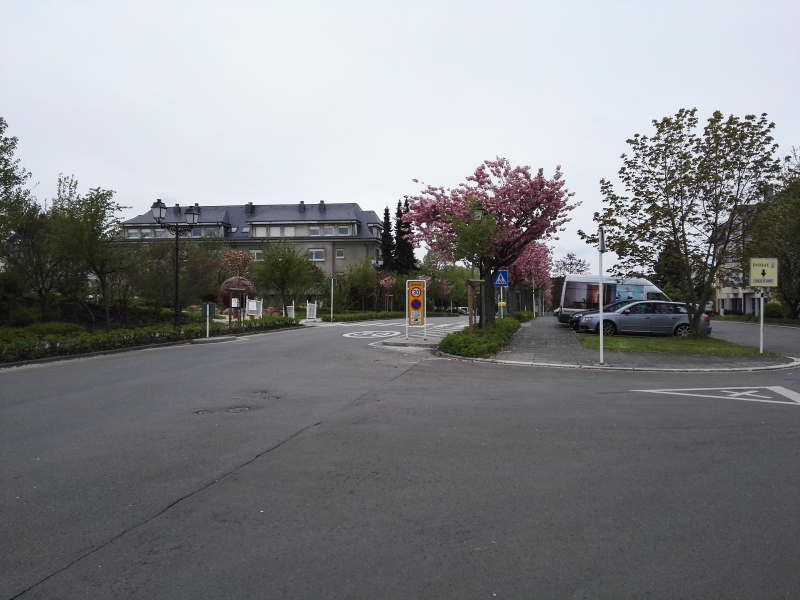






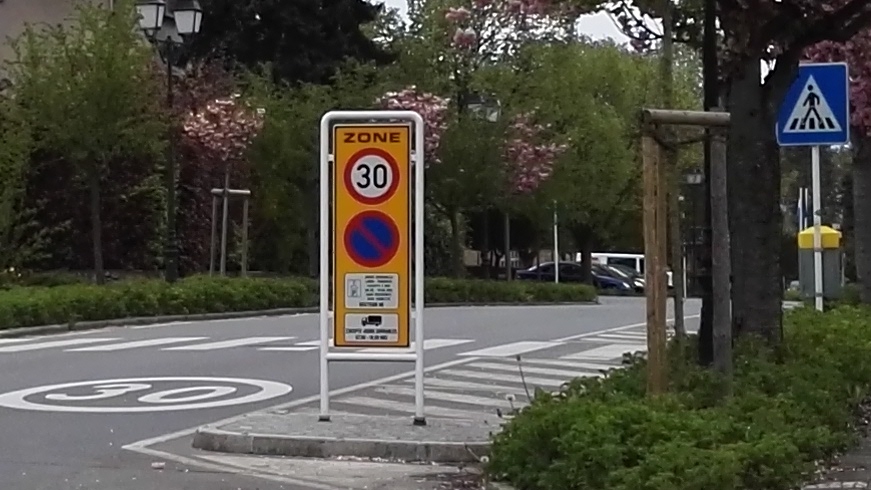












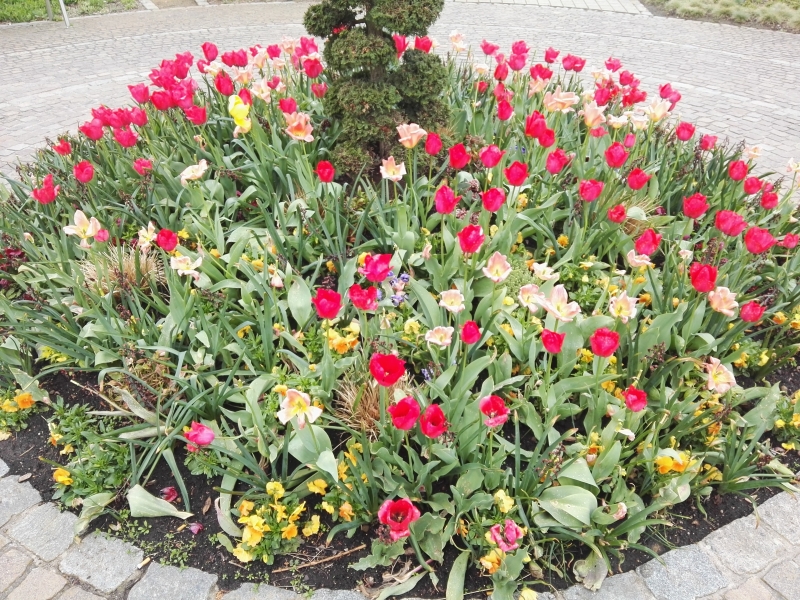



















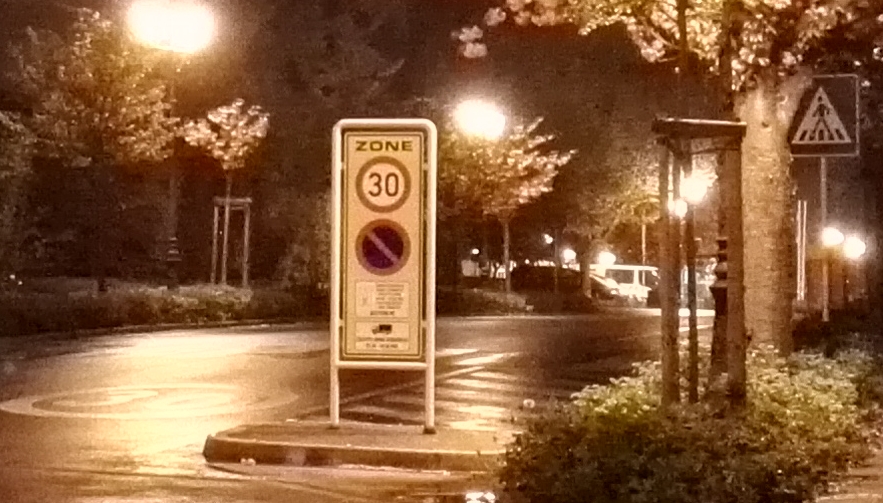






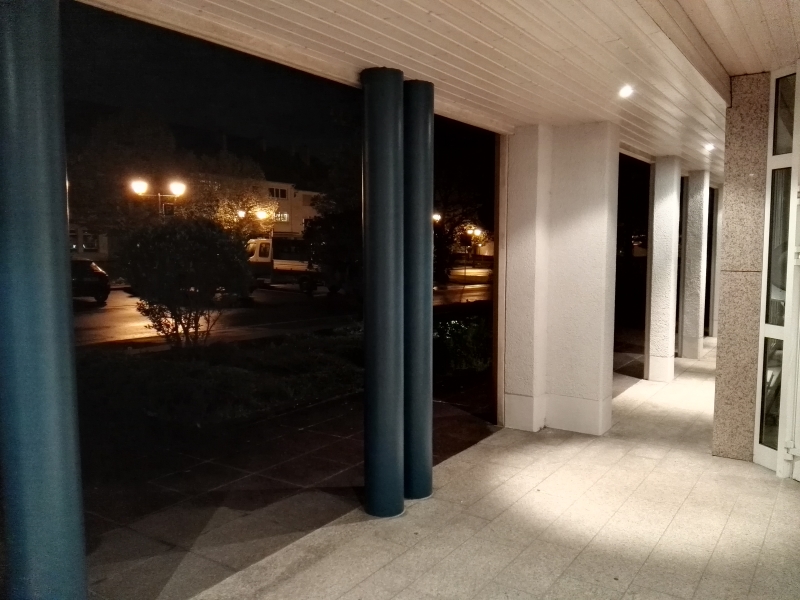






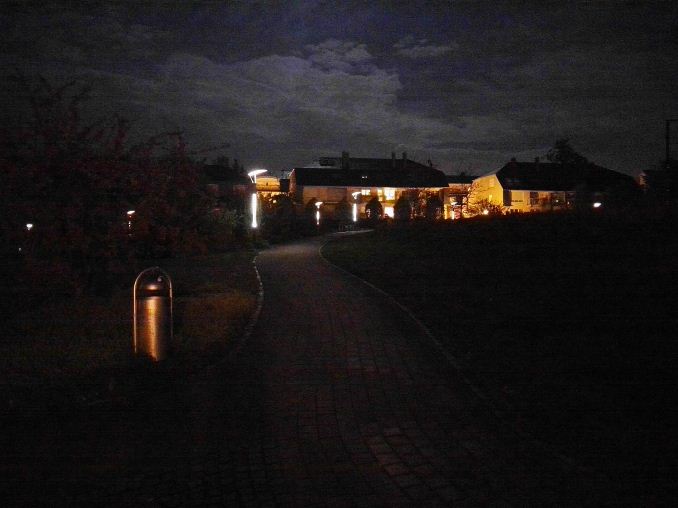








104 Comments
View All Comments
hrrmph - Thursday, June 4, 2015 - link
It's probably more useful than an iPhone for people who travel a lot and occasionally go off the grid, and thus need the device to still work as a GPS, camera, miniature computer, etc, while drawing all data from fast, convenient local storage...- It has a MicroSDXC slot, so it can take the new 200GB MicroSD storage cards; and
- It has dual SIMS.
Unfortunately, it lacks a user removable battery, so it is still inferior in that regard to each of the phones and phablets that I already have. But, in general, I like what they are doing.
Something that other nationals can tend to forget is that China has a lot of wealthy people (far more than the US or possibly even Europe). Even though these elite Chinese are wealthy, many of them are shrewd spenders. They want value for their high-end spend. So there is a lot of pressure on Chinese vendors to produce high-end devices that include every possible feature.
So just like Japanese enthusiasts used to get certain stereos and cameras that America only dreamed of, the Chinese are demanding that the manufacturers provide more fully functional high-end phones that can do everything... including the things that the iPhone cannot do.
That said, the iPhone is making headway in China too...
... but just like in the US, it's for all the wrong reasons. Namely, it's a jewelry piece that holds sway as a status symbol amongst the more vacuous of minds. Owning one supposedly elevates your perceived social status - much in the way that owning a ludicrously expensive sports car or ultra-luxury car does the same (think Rolls-Royce, Bentley, etc.).
Sociologists and psychologists have hypothesized that such objects are attractive to both the buyers who display them publicly and to those who view them, particularly the opposite sex.
People who buy these objects are subliminally advertising to potential mates that they have excess money that (under the proper circumstances) can in the future be re-directed to caring and tending for children and non-working spouses.
The attraction effect is generally stronger if the object is purchased and displayed by a male, because many societies still expect the male to bear the larger burden of providing financial resources. This is especially the case while the female is pregnant and in the early years of caring for children that aren't yet school aged.
The larger the excess spend over the practical value, the higher the perception of excess earning capacity. That's why we sometimes see phones sold with precious jewels encrusting them. Apple is just doing the same thing on a lower level... right out of the box. Charging more than the inherent underlying value.
So it's rather refreshing to see the Chinese manufacturers taking a different approach.
And it is especially refreshing to see the Chinese doing this in light of the fact that Samsung vacated the market as an Apple competitor and have now lowered themselves to merely matching Apple's product features. Without the Chinese, the Apple-Samsung twins (newly conjoined) don't really have any competition. The Chinese upping their game changes things.
Of course Apple can play this game too if they want. They simply need to offer more than 264GB of storage. The P8's 64GB of onboard NAND storage combined with the new SanDisk 200GB Micro-SDXC storage card will now set a very high bar that Apple needs to try to hurdle over (if Apple wants to be taken seriously with regard to storage).
I'm thinking that if Apple offers its next phone with 512GB of storage then that would safely secure the storage crown for them (remember, Samsung used to regularly double Apple's storage by simply adding a Micro-SD slot, but Samsung has now given up on competing).
Then Apple would need to add Dual-SIM slots to improve connectivity and travelability. It may come as a surprise to the uninformed that the newly wealthy Chinese (like many other nationals) are joining the tourist-corps. They are world travelers and they want their phones to work anywhere that they are likely to travel. Having Dual-SIMs makes it both convenient and affordable (roaming data charges are still the bane of the planet, even for wealthy Chinese).
I would also argue that to be better than what I've personally already got (and most Chinese, other Asians, Middle-Easterners, Africans, and Europeans already have), Apple would need to offer user removable back covers and batteries. Nothing says "I can handle a thirty hour multiple segment, multi-modal (air, sea, and land) journey" than a couple of lightweight fully-charged spare batteries. No awkward cables... just plop in and play on like nobody's watching.
So the Chinese phones are Apple clones? Nahh, this is just the Chinese practicing for the end-game. They want to do what Samsung used to regularly do to Apple: offer the consumer more for less... and the Chinese have just proven that they can win the storage crown. So who is to say they won't eventually win the various other races to provide the best-of-the-best on the other features? All it requires is Apple-Sung to remain lazy… which is something they have lately proven to be very adept at.
pityko - Thursday, June 4, 2015 - link
I signed up just to be able to thank you for this comment. You brilliantly summarised everything that's wrong with the current "leaders" of the mobile phone industry. I've been a Samsung user for years after being disappointed by the iPhone 3G then HTC in general but now when my contract expires for my Note 3 I am leaving for a Chinese brand, I want to support a company that hasn't given up trying.pgari - Thursday, June 4, 2015 - link
Always surprises me how people in these blogs write about what Apple "should do", but for what? To be even more successful? What are their credentials?Of course, anyone can say what they like or dislike. But the implicit assumption in most of these comments is "I know better", which is, at the least, presumptuous
Rod_Serling_Lives - Friday, June 5, 2015 - link
Well said. Apple already dominates with only a handful of devices and I don't know if they could be in a better position than they are currently.nathanddrews - Friday, June 5, 2015 - link
Personally, I don't like anything about Apple except the build quality of most of its products and its stock price. Cha-ching! I don't buy Apple products or use Apple software, but I'm happy the corporation is so successful. Deep down inside, I find myself horribly judging and mocking consumers of Apple products, but then I just have to remind myself not to feel bad about it. They're already dead inside.;-)
Brakken - Friday, June 5, 2015 - link
I think it's Tall Poppy syndrome... even ignoring everything else Apple has pioneered over the years and just looking at the Apple Watch - first gen of hardware and software, and it's amazingly smooth and will have years of support and development. With the hardware makers for Android, they are all dropping support for SD cards and removable batteries, except LG (?), but no one seems to talk about it when it happens. I think people start making 'I know better' statements because they don't check history.MarcSP - Saturday, June 6, 2015 - link
I agree with many of the things you said, but your theory about iphone as a status symbol is incomplete. I mean, according to what you said it seems that most buyers should be single men, and I have seen as many women as men with iPhone in Shanghai (maybe more, as female tend to follow fashion very strongly, and most cannot choose a phone based on "tech" or "features").Also, many married couples and middle aged and old persons use iPhone. Even students have them.
It always strikes me, because in China iPhone's price is quite higher than the average salary in the first tier cities. Imagine if an iPhone cost 2000 USD in the US. Nobody would buy it, but in china they do.
I guess mostly because the "status symbol" thing, but not to impress potential sexual partners, just to say "hey, look, I am NOT POOR", even if you are and cannot afford a health insurance and use recycled oil for cooking. After the communist times, Chinese socity has gone to the other extreme. Now being poor is not just pityful, it is shameful. No matter how, even if you have to sell tainted milk to babies or steal from your fellow citizens with lies, you MUST become rich. Of course, most cannot, so that's why they think having a "symbol" is better than nothing. "Appearence" is king nowadays in China, not "substance". I guess they need 20 more years to find a balance. Too many changes, too fast.
Ethos Evoss - Friday, June 12, 2015 - link
jesu su writing a book ?jjj - Thursday, June 4, 2015 - link
You wish the iphone had a sane design like this instead of their roadkill look.puremind - Thursday, June 4, 2015 - link
If Apple had cloned this device, it would have been better. Instead of the huge bezels it would have had a much more usable form factor.